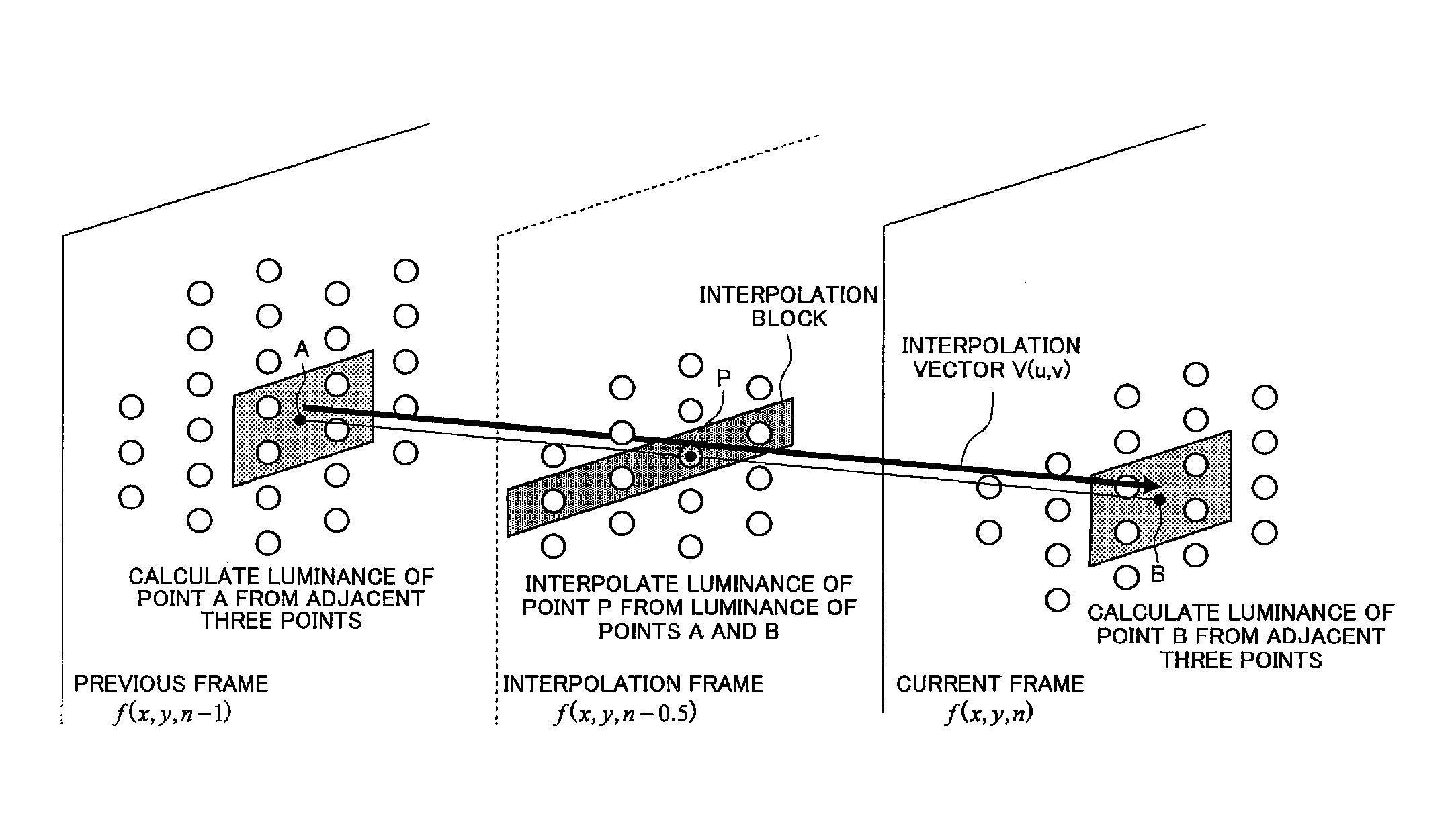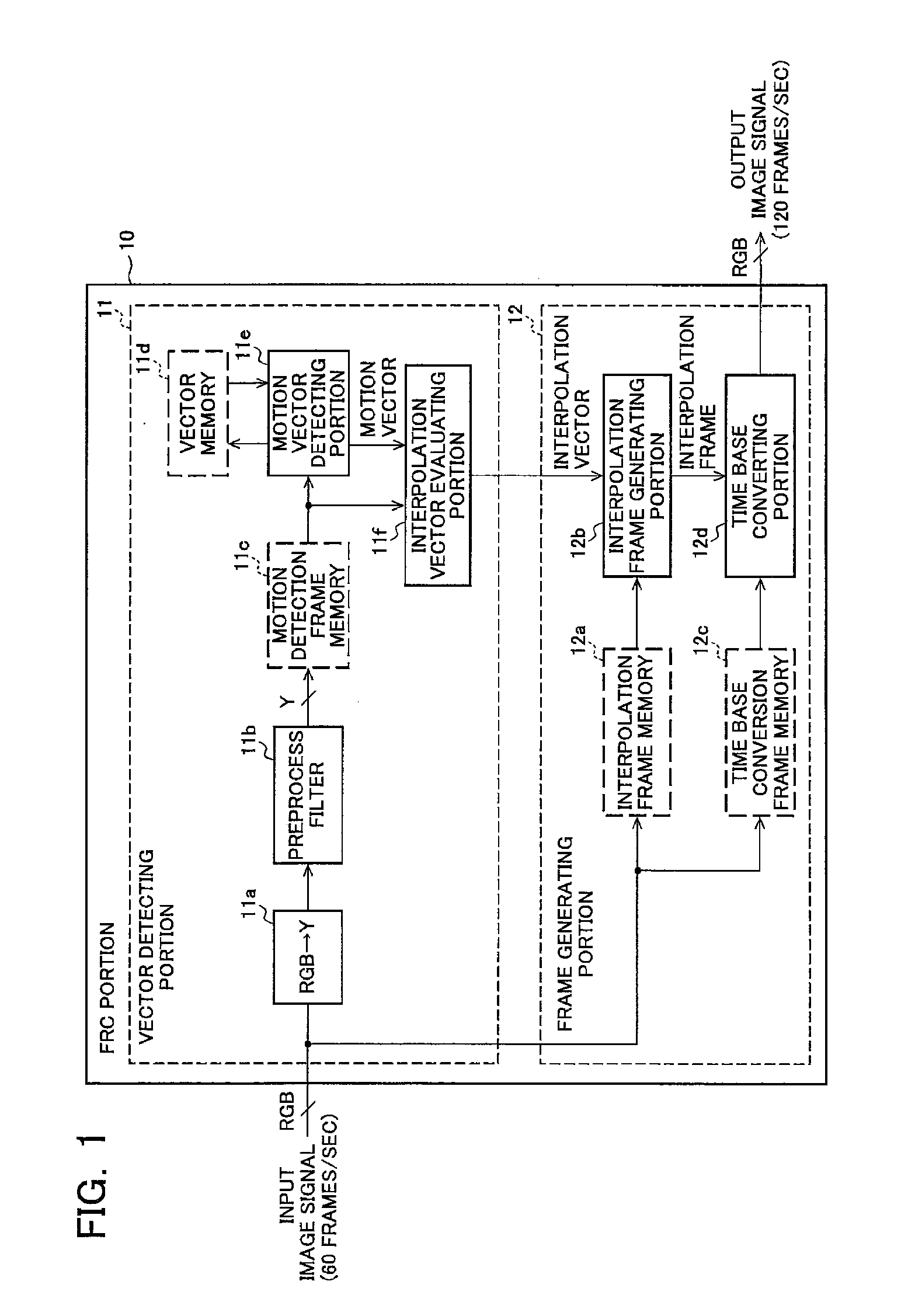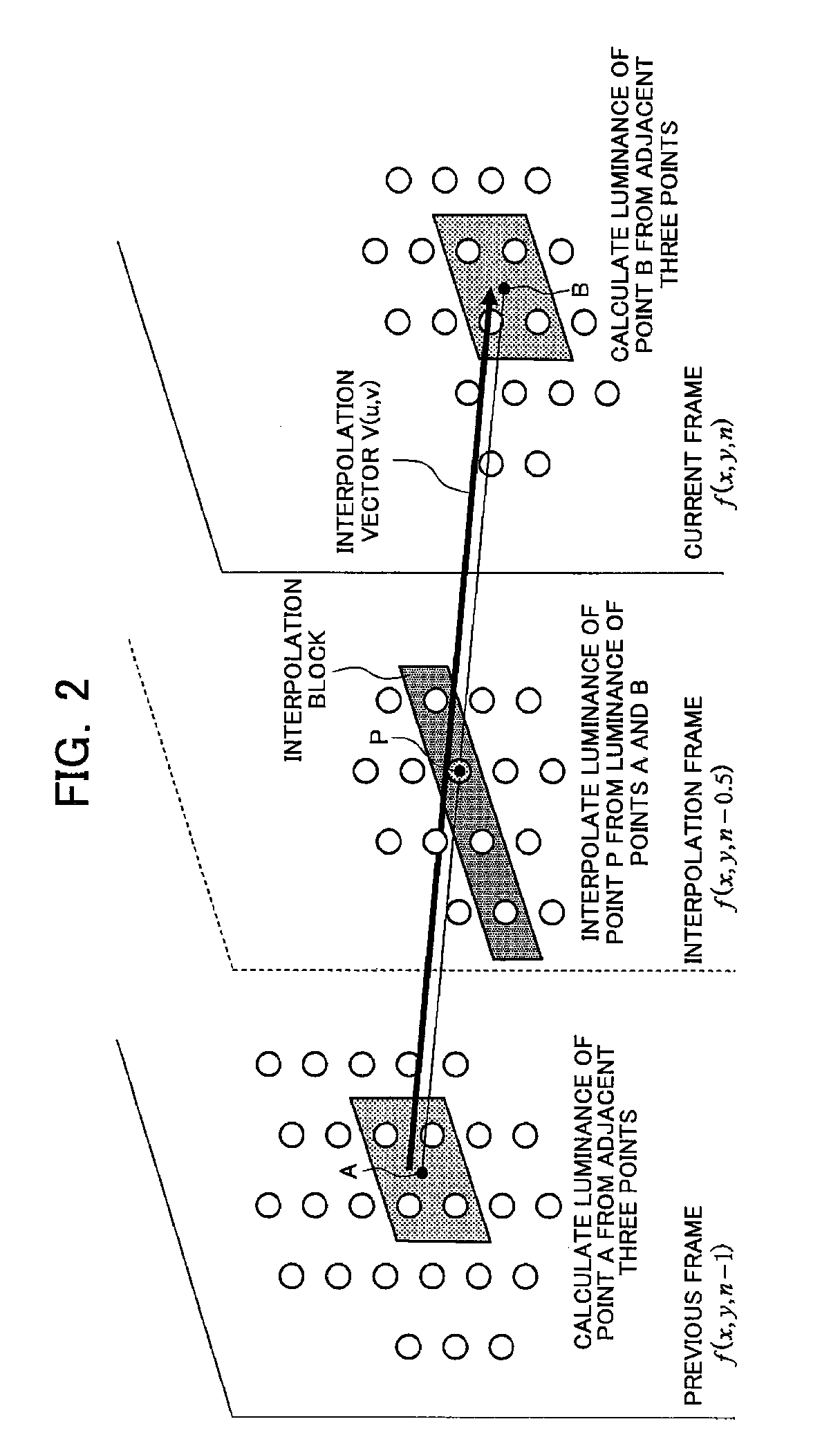Image displaying apparatus and method, and image processing apparatus and method
a technology of image processing and display apparatus, which is applied in the field of image processing apparatus and method, can solve the problems of motion blur, motion blur, and motion blur of liquid crystal display devices
- Summary
- Abstract
- Description
- Claims
- Application Information
AI Technical Summary
Benefits of technology
Problems solved by technology
Method used
Image
Examples
first embodiment
[0160]In a first embodiment of the present invention, an input image is separated into the low-speed region and the high-speed region, and the motion compensation process in the FRC portion 10 is disabled by setting zero-vector for the interpolation vector of the interpolation block corresponding to the still region in the low-speed region so as to execute the zero-vector preferential interpolation process for the still region in the low-speed region and not to execute the zero-vector interpolation process for the still region in the high-speed region.
[0161]FIG. 5 is a block diagram of a main configuration example of the interpolation frame generating process according to the first embodiment of the present invention. The configuration of the present embodiment includes the delaying portion 111e, a low-speed region detecting portion 112e, a still-region detecting portion 113e, the interpolation vector controlling portion 114e, the first interpolation frame generation processing port...
second embodiment
[0176]In a second embodiment of the present invention, an input image is separated into the low-speed region and the high-speed region, and the motion compensation process in the FRC portion 10 is disabled by setting zero-vector for the interpolation vector of the interpolation block of the interpolation frame generating portion 12b corresponding to the still region in the low-speed region so as to execute the zero-vector preferential interpolation process for the still region in the low-speed region and not to execute the zero-vector interpolation process for the still region in the high-speed region.
[0177]FIG. 8 is a block diagram of a main configuration example of a liquid crystal displaying apparatus according to the second embodiment of the present invention and the liquid crystal displaying apparatus includes the FRC portion 10, the controlling portion 13, the electrode driving portion 14, and the liquid crystal displaying panel 15. The FRC portion 10 includes the motion vecto...
third embodiment
[0184]In a third embodiment of the present invention, a linear interpolation processing portion is included on a path different from the input path to the FRC portion 10; an input image is separated into the low-speed region and the high-speed region; and the image signals from the linear interpolation are interpolated into the still region in the low-speed region so as to execute the linear interpolation process for the still region in the low-speed region and to execute the motion compensated interpolation process for the still region in the high-speed region. That is, the process is switched such that the frame rate conversion is performed by executing the linear interpolation process without executing the motion compensated interpolation process for a pixel corresponding to the still region in the low-speed region or a region including the pixel.
[0185]FIG. 9 is a block diagram of a main configuration example of a liquid crystal displaying apparatus according to the third embodim...
PUM
 Login to View More
Login to View More Abstract
Description
Claims
Application Information
 Login to View More
Login to View More - R&D
- Intellectual Property
- Life Sciences
- Materials
- Tech Scout
- Unparalleled Data Quality
- Higher Quality Content
- 60% Fewer Hallucinations
Browse by: Latest US Patents, China's latest patents, Technical Efficacy Thesaurus, Application Domain, Technology Topic, Popular Technical Reports.
© 2025 PatSnap. All rights reserved.Legal|Privacy policy|Modern Slavery Act Transparency Statement|Sitemap|About US| Contact US: help@patsnap.com



